 Getting In
Getting In
We arrived in Jodhpur by a passenger train after spending 2 days in Jaipur. We witnessed the sunrise along with the salt pans during the ride. Also, for the first time, we took an AC Chair Car and we were not disappointed. We got a bit of sleep and managed to get some blogging as well.
Land of Grand Forts and Palaces
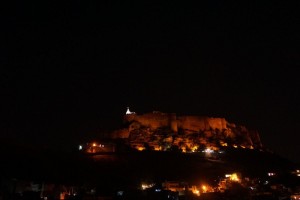 Jodhpur is the Capital of the erstwhile Marwar kingdom which is known for its valour in defending itself. One of the greatest symbols of this is the towering Mehrangarh Fort. Built above the Jodhpur city, it can be seen from anywhere in the city.
Jodhpur is the Capital of the erstwhile Marwar kingdom which is known for its valour in defending itself. One of the greatest symbols of this is the towering Mehrangarh Fort. Built above the Jodhpur city, it can be seen from anywhere in the city.
We walked from our hotel to the fort through curving streets full of blue houses. Once inside the fort, we were entranced by it’s scale and the view of the city as well as the hills nearby.
We  then entered the ticketed area of the fort and visited the museum. The art of the Marwar area, its culture and the grand images of its kings were absolutely stunning. In addition, within the fort and throughout the city, people wore the traditional dresses and there were groups of people doing traditional dancing.
then entered the ticketed area of the fort and visited the museum. The art of the Marwar area, its culture and the grand images of its kings were absolutely stunning. In addition, within the fort and throughout the city, people wore the traditional dresses and there were groups of people doing traditional dancing.
The museum was grand and virtually the entire palace of the area had been turned into a museum. The current king of Jodhpur has been very supportive in promoting tourism and that could be seen in the museum itself. Intricate detail of the life of the royals had been saved along with the paintings in the fort.
We met a fellow traveler Nina from Riga, Latvia in one of the rooms and we chatted for quite a bit while we saw the museum. She was lovely and knew so much about the Indian culture including dancing Kathak in Latvia. However, she had a bad time being harassed by auto drivers and hawkers in Jaipur. We couldn’t be anything but sympathetic as we ourselves have been annoyed by the tuk tuk drivers, despite of being Indians! And, we shall see what other countries with different culture hold of us.
O nce we finished from the museum, we went to the ramparts of the fort. The Eagles were flying overhead after getting a meal provided by the royalty. The Eagle is the insignia of the Rathore dynasty and Eagles can be seen all around Jodhpur. From the rampart, we were finally able to see the blue city.
nce we finished from the museum, we went to the ramparts of the fort. The Eagles were flying overhead after getting a meal provided by the royalty. The Eagle is the insignia of the Rathore dynasty and Eagles can be seen all around Jodhpur. From the rampart, we were finally able to see the blue city.
It is unclear who initially started painting blue houses or why. We’ve heard everything from Brahmins, servants of the royalty and also the fact that blue is a good colour to reduce the heat and mosquitoes. Whatever be the case, a large area near the fort has its houses blue and it is magnificent. The sun setting behind the hills was beautiful but were unable to see it set as the security kicks everyone out.
Blue City, Jodhpur, unlike other Rajasthani cities, does not have a lot of palaces or forts. However, it makes up quality for quantity. Our next stop was the grand Umaid Bhawan Palace which is the last of the great palaces built in India. As there was a famine in the area, the king decided to build a palace and provide employment for the people in the area. Most of the hotel is now part of the Taj Group of hotels, the king resides in a quarter and a small area is now a museum.
The museum shows the history of the dynasty, the kings of the 20th century and thing used by the royal family. In addition, there is a vintage cars gallery which houses some amazing old cars. Other than that, the view from the hill is amazing and we had great afternoon here.
Magical Centopaths
The Rathore dynasty has been ruling the Marwar area since 12th century. During this time, they only had 2 capitals. Mandore was the Ancient Capital of the area and was in use till the 16th century.
Mandore Gardens house the ruins of the fort, various temples and centopaths of old kings of the dynasty. The centopaths are kept well and the architecture is quite detailed. Unbeknownst to us, the ashes of the kings are kept in the centopaths so they are more like a pyramid than a cremation place.
On our visit, it was noon and the place was peaceful and quiet. The shade provided by the centopaths was cool and refreshing while we were wowed by the architecture.
According to the legend, Ravana’s wife was from the area and there is temple for him while he is considered a son in law. We never got to see this temple as we were warned against going to the hills by the tourist police. It was a fun couple of hours being there.
Sickness Hits Home
On our second morning in Jodhpur, I woke with a fever and a sore throat. It was a sure sign of a cold coming. However, I later felt weakness in the legs and signs of an upset stomach. To avoid further sickness, we decided to relax a little spending time at home sleeping and writing for the blog. I gargled and belched several times a day while taking panadol and managed to avoid a full blown cold. Phew!
A Great Feeling
We had been feeling a little let down by Rajasthan till this point. Part of it was the touristy feel to this place while it was also our hectic schedule.
Jaswant Thada changed it all. It is a white marble centopath for king Jaswant Singh who ruled in the late 19th century. It is known as the Taj of Rajasthan. The king is treated like a god here and people pray and ask him to grant their wishes.
The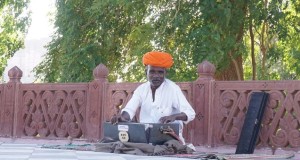 land around is a stunning desert park and the old wall of the fort encircles it. While the memorial was beautiful, we sat on the stairs below in the shade to relax. An old rajasthani man a singing traditional songs and we sat listening. The cool breeze blowing with Rajasthani music in the shade finally made us happy to be in Rajasthan.
land around is a stunning desert park and the old wall of the fort encircles it. While the memorial was beautiful, we sat on the stairs below in the shade to relax. An old rajasthani man a singing traditional songs and we sat listening. The cool breeze blowing with Rajasthani music in the shade finally made us happy to be in Rajasthan.
Rural Life
Back in Australia, we had wanted to try two unique things in India. One of them was living in the desert. We started researching and found Hacra dhani which was run as an eco-tourist experience. While it was expensive, the reviews made us believe that it would be a good experience. Mr Gemar Singh met us in Jodhpur and we drove towards his land and his home.
(Here is a photo of Mr. Germar Singh and his wife)
Osian is an historic town around 25km from Jodhpur famous for its Jain temples and sand dunes. Mr Singh was a hardy Rajput (former royal class) but he had a soft tone and gave a detailed answers. While he had a Mahindra 4×4 which could handle dunes and potholes, he drove unusually slow.
 At one point, he stopped the car on the side suddenly and pointed to the bush 50 metres away. It was a herd of black bucks, a protected deer once almost hunted to extinction. Again some distance away, he suddenly turned the car into the bush and followed a trail until we saw a fully grown male back buck sitting in the middle of the field. As it saw us, it galloped away in full flight perhaps worried we will shoot it.
At one point, he stopped the car on the side suddenly and pointed to the bush 50 metres away. It was a herd of black bucks, a protected deer once almost hunted to extinction. Again some distance away, he suddenly turned the car into the bush and followed a trail until we saw a fully grown male back buck sitting in the middle of the field. As it saw us, it galloped away in full flight perhaps worried we will shoot it.
By this point, we were already impressed with Gemar Singh, his eyes were trained to spot deer through the bush and his knowledge was amazing. However, our respect only grew for him. In the space of a few hours, we saw wild deer, blue bull, peacocks and Indian sprinbok deer.
We spent some time in Osian seeing the 1000 year old Jain Temple. The carving on the stones were immaculate as well as the story of how people in the area became followers of Jainism. The trading community of Oswal Jains which is spread all around the world comes from this town.
Our next stop was a camel ride and time spent with a camel herder family. However, this was no ordinary camel ride. We traveled through the brush over dunes to the camel herder village. Here we got to know our hosts, see their land and how they make a living in mostly arid land.
Nainsukh and his family owned around 6 camels. They had land where they grew millet from the monsoon rains and gave camel rides to tourists for a fee. We were welcomed to the centre of their property and invited to sit on a cot while they all sat on the ground. This meant they gave us higher status as guests.
We  were mostly left free to discover their property, play with camels, calves and take photos to our hearts content. They even taught me how to tie a turban in the rajasthani style. While we sat, we saw villagers in their natural environment. They sat in the central area and talked about crops and other things. We noticed that the guests were welcomed with tea and opium. Lunch was a traditional thali with sabzi, daal, various breads and rice. Our favourite was definitely millet bread. Our host sat to serve us until we were done eating. An amazing gesture!
were mostly left free to discover their property, play with camels, calves and take photos to our hearts content. They even taught me how to tie a turban in the rajasthani style. While we sat, we saw villagers in their natural environment. They sat in the central area and talked about crops and other things. We noticed that the guests were welcomed with tea and opium. Lunch was a traditional thali with sabzi, daal, various breads and rice. Our favourite was definitely millet bread. Our host sat to serve us until we were done eating. An amazing gesture!
In the evening, we again mounted the camels to see more of the countryside and the sunset from the dunes. The camels crossed the village and its fences made of a thorny plant. Our guide was a young kid in the 9th grade who knew all about samsung and legal issues with property despite living in a village. The village was changing afterall!
Another interesting change we saw in the villages was the toilet complex. Indian villages culturally have avoided building toilets and using the great outdoors to relieve themselves. However, not only is this a bad look for the country, it is unsafe for women. For the first time since independence, an Indian government has given a Rs. 12,000 subsidy to build toilets and the people are taking the opportunity with both hands. We saw people building new toilets throughout the villages. Modi government is changing a habit for thousands of years.
Finally, we saw the sunset from the dunes. It was incredibly beautiful especially with the camels chilling in the sand. We met an old British couple who told us great stories of their trip in Rajasthan. Once done, we were picked up by Mr Singh to take us to our accommodation for the night.
Once we reached Hacra dhani, we were absolutely astounded. We reached in the dark and there were no light whatsoever. In the pitch dark, we were able to see the stars and the Milky Way which already made our night. After showing us the hut and toilet, we had dinner in Mr Singh’s house with his wife and son. Mr Singh’s wife made an amazing simple meal of fire baked bread, kadi and sabzi.
 (Here is a picture of the property in during the day).
(Here is a picture of the property in during the day).
After dinner, we sat in the dark and simply heard the sounds of the night. It was almost a full moon so we could see well and enjoyed the simplicity of the village. At night while sleeping, we heard the sounds of peacocks warning each other of predators.
In the morning, I got up to take photos and saw deer and peacocks just roaming around. We were only there for a short time but it really was an amazing visit!
An Expensive Disaster
The contrasting thing to the village life was living in a palace. This proved to be a nightmare as most of the bigger palaces are now run by huge 5-star hotel chains. On a backpackers budget, we could not afford such a thing. However, we though we had struck gold when we found Ranbank Palace in Jodhpur built in 1920s. It was built for a prince of the royal family and that was good enough for us!
When we arrived from the village, we found out that we were upgraded to a suite. Wow! What could be better? We then set about cleaning up and realised that the shower was broken. We could shower but would be burnt by the hot water. Nice upgrade!
The next two hours we spent sitting in gowns and watched as two maintenance guys came to fix the shower. We finally had a shower and thanked our stars. However, it was not for long as the TV remotes stopped working. The maintenance guy again fixed them but we were disappointed. Upon complaining, we were told that we could get 1 hour of free wifi as compensation. Thanks for providing us what should be free anyway!
This day also happened to be Karwa Chauth where Hindu women fast for their husband’s long life. However, being from the SRK generation, Manish also fasted the entire day without food and water. At night, we asked the hotel to have access to the terrace to be able to see the moon. For some reason, on this night it feels like the moon purposely takes a long time to come out. We waited for around half an hour when we finally noticed the moon. It was quite a romantic moment and we broke the fast with kaju katri and water.
And to finishing off, here is a traditional thali we thoroughly enjoyed.
This ended our trip in Jodhpur – the blue city!
Summary
Final Thoughts
We stayed in Jodhpur the longest out of all the Rajashtani cities. We had a variety of experiences in the city. To be fair, Jodhpur doesn’t have the monuments of other cities but it has various experiences around it which can keep you busy. One thing we liked in Jodhpur was that there were no hassling and the ‘tourist information’ centres, run by the police, were all around the tourist areas to provide service.
Our experience at Jaswant Thada and Hacra Dhani was absolutely amazing while the palace left a little more to be desired for!
Accommodation
We stayed at a 350 year old haveli built of red sandstone which was a delightful experience. Living in the small streets gave us an easy access to the Mehrangarh Fort while also showing us the markets of Jodhpur. We also stayed in Hacra dhani and Ranbanka palace. Dhani was an awesome experience but the palace was not so good.
Transport
We walked a lot around Jodhpur. However, we also used local buses as well as autorickshaws. Our experience with autorickshaws was better than other cities but still we couldn’t be sure they were not overcharging us.

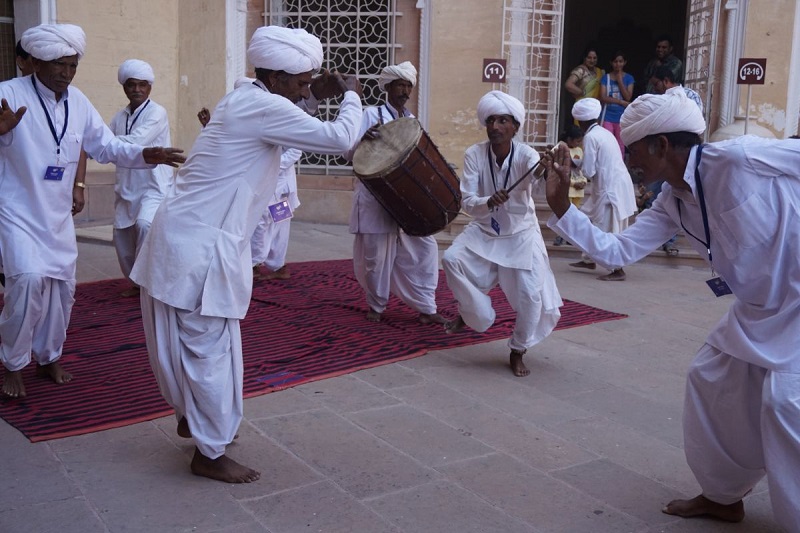
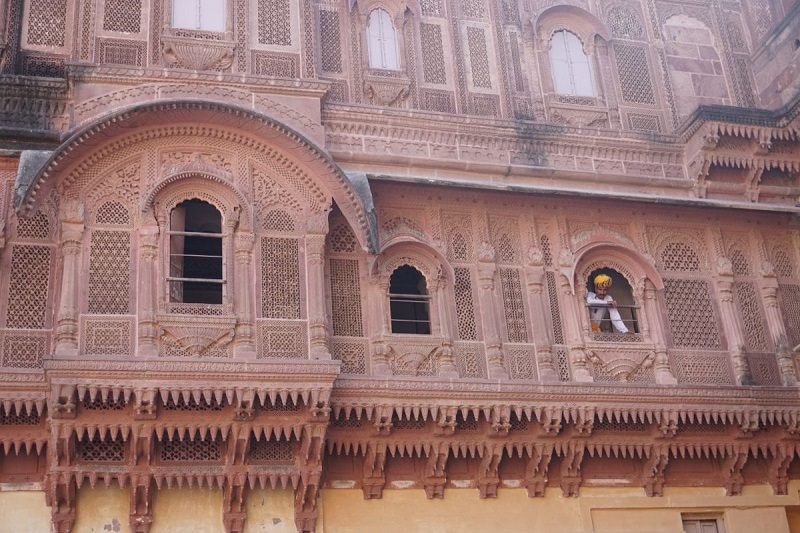
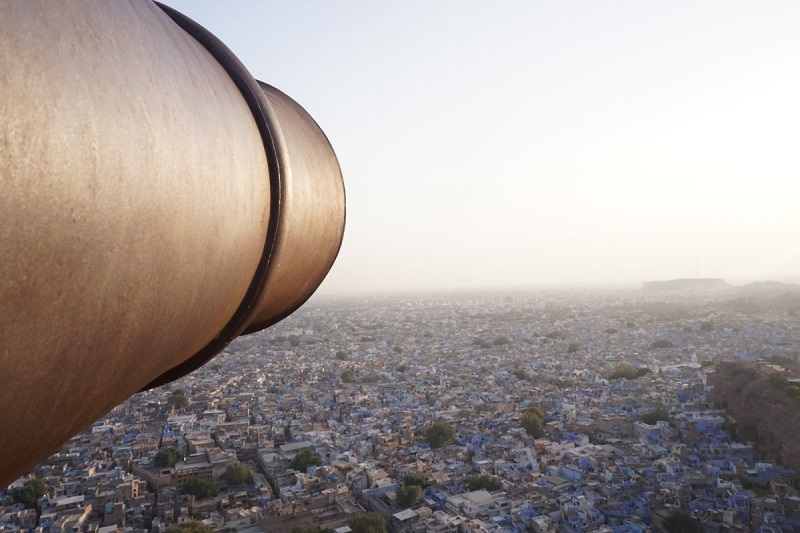


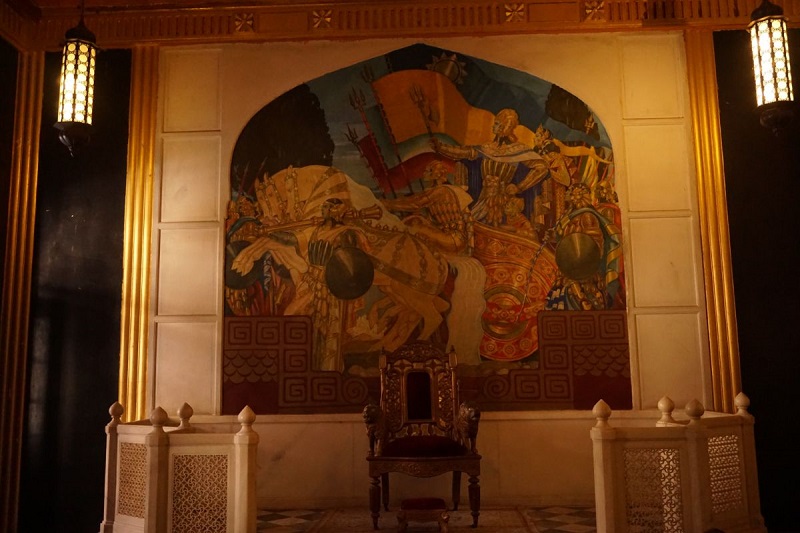







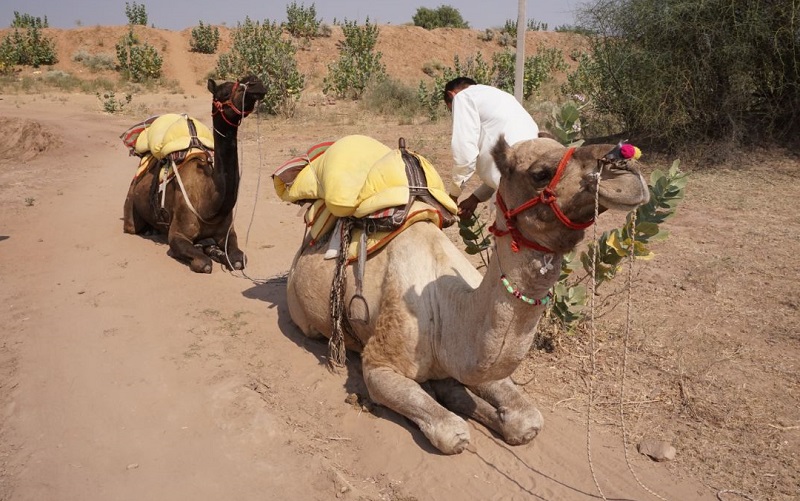


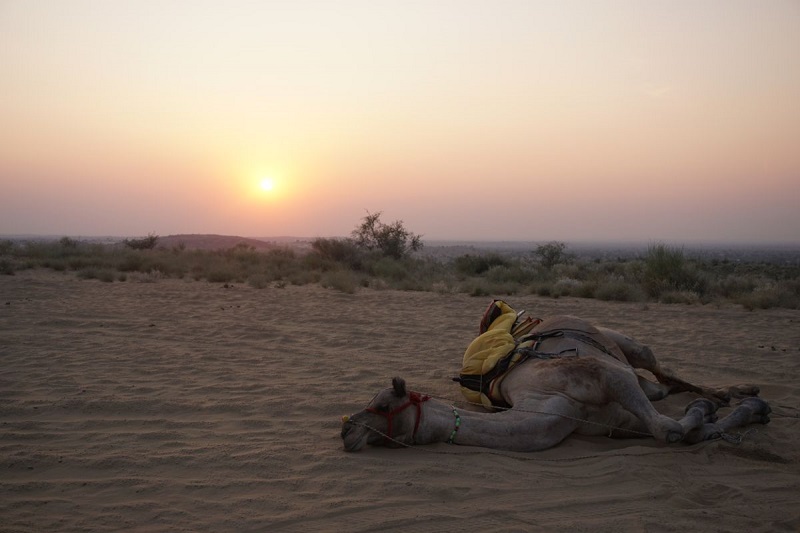



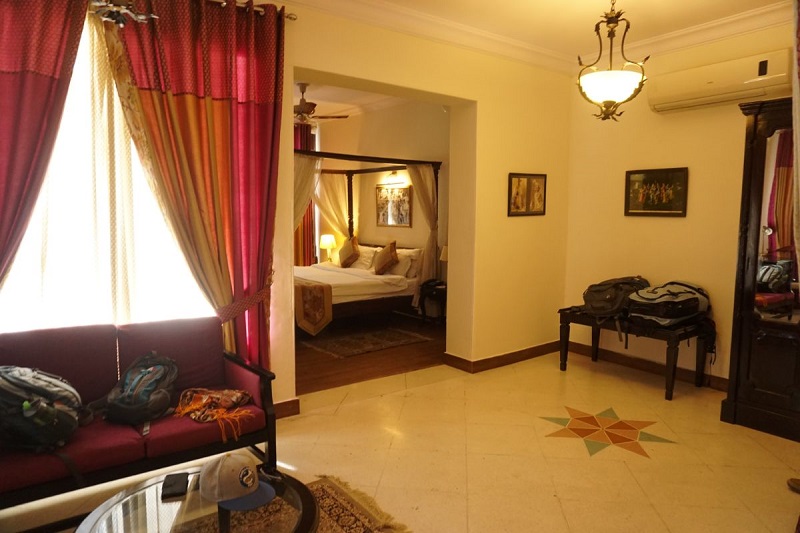


One thought on “Jodhpur – The Blue City”
Comments are closed.